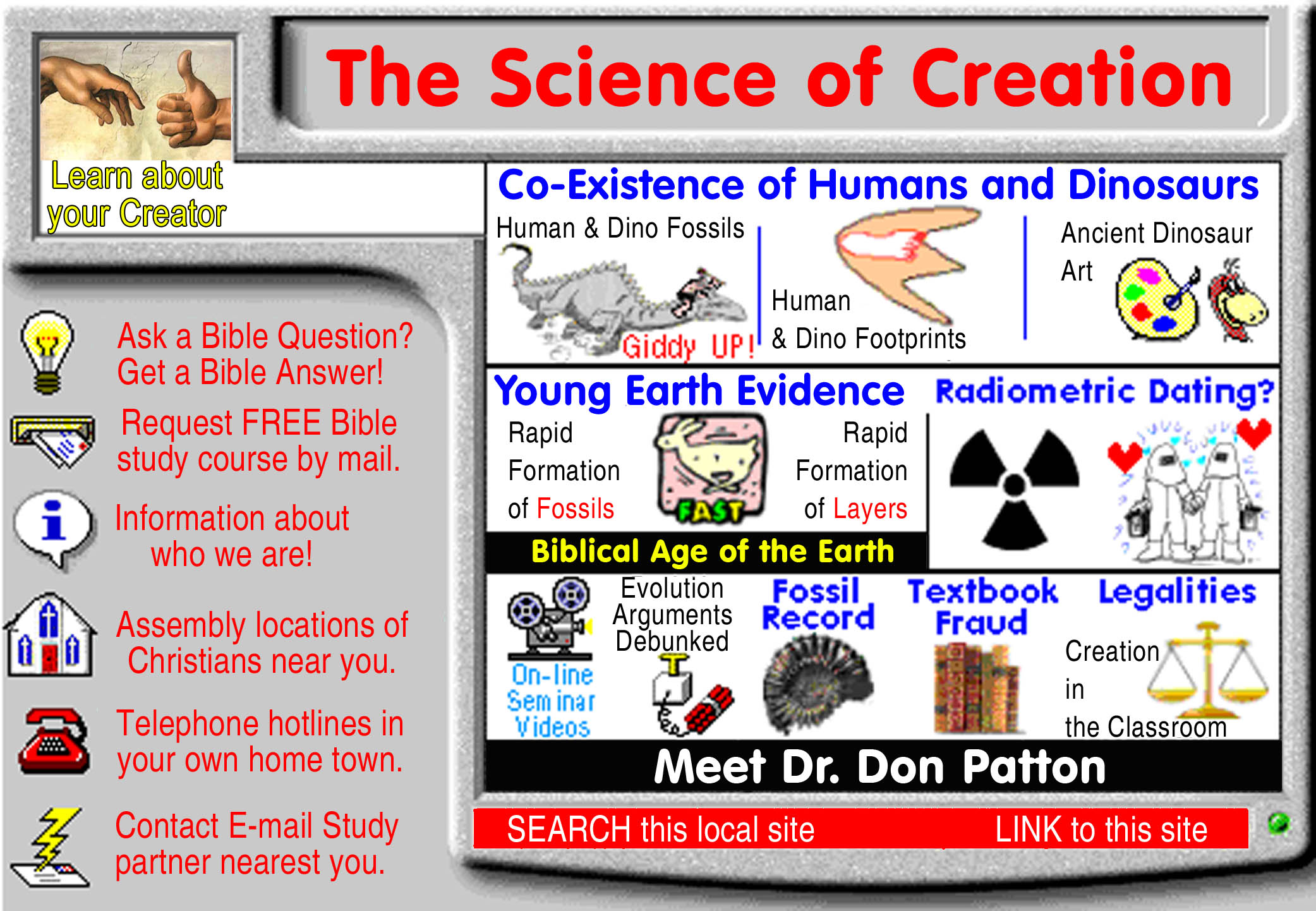
|
Willo! |
Dinosaur Heart Fossilized - Obviously Rapidly! |

|
Willo! Roll your mouse over an anatomical name to see that part highlighted. |
|
|
Willo: A fossilized heart could not form slowly. (Click on photo for high resolution) |
|
|
|
Left is a CT scan of the heart taken from the area identified below.
|
|
Here is a CT scan of the rest of the body cavity. |
|

|
|
|
|
Associated Press, April/20 |
Michael Hammer, a co-author of the study, found the nearly intact dinosaur fossil in Harding County, S.D. in 1993. ... Dr. Andrew A. Kuzmitz, an Ashland, Ore., physician and amateur paleontologist, later examined the specimen with a CT scan, a form of medical X-ray that gives details of internal structure. He said seven cardiologists looked at the images and identified the object as a heart with separated pumping chambers similar to the human heart. "You could see both ventricles (lower heart chambers) and the aorta (a major artery),'' said Fisher, the first author of the study. |
|
|
|
|
Rueters, April/20 |
Paul Fisher, director of North Carolina State University's veterinary Biomedical Imaging Resource Facility, said in a telephone interview... "This was the first time we were looking for what used to be soft tissue structures.'' Fisher said they did not know what they would find. "We were surprised that it is as recognizable as it is -- something that had been in the ground for 65 to 67 million years...'' "It's truly amazing that this animal seems to have had such a highly evolved heart. The implications completely floored me,'' Russell said. "This challenges some of our most fundamental theories about how and when dinosaurs evolved." |
|
|
|
|
Discovery.com News, April 20, 2000 By Michael Milstein, |
"It was an absolutely incredible sight because it turned out to be a ringer for the heart of a mammal or bird today," said Dale Russell, a paleontologist at North Carolina State University. "What was amazing is how similar the heart is to the hearts of modern animals," said co-author Michael Stoskopf, a professor of wildlife and aquatic medicine at N.C. State and an expert on the anatomy of mammals, reptiles and birds. The petrified heart belongs to a two-legged, 660-pound vegetarian thescelosaur on display at the North Carolina Museum of Natural Sciences in Raleigh, N.C. Professional collector Michael Hammer excavated the dinosaur in South Dakota in 1993 and named it "Willo" after an owner of the ranch where it was found. |
|
|
|
Highlights of different parts of the heart and chest cavity.
|
Left Ventricle |
Right Ventricle |
Septum |
Scapula |
Neck bone |
|
|
|
|
|
|


<p><img src="dino-heart.jpg" alt="Click to View" WIDTH="180" height="263" align="left" name="base" vspace="8" hspace="25" border="1" alt="3-D false color rendition of heart with javascript rollovers"><br> <a href="#top" onMouseOut="MM_swapImgRestore()" onMouseOver="MM_swapImage('document.base','document.base','dino-heart-scapula.jpg','#955955482770')"><font size="2" face="Arial, Helvetica, sans-serif">Scapula</font></a></p> <p><font size="2" face="Arial, Helvetica, sans-serif"><a href="#top" onMouseOut="MM_swapImgRestore()" onMouseOver="MM_swapImage('document.base','document.base','dino-heart-neck.jpg','#955955747730')">Neck</a></font></p> <p><font size="2" face="Arial, Helvetica, sans-serif"><a href="#top" onMouseOut="MM_swapImgRestore()" onMouseOver="MM_swapImage('document.base','document.base','dino-heart-left-vent.jpg','#955955773000')">Left Ventricle</a></font></p> <p><font size="2" face="Arial, Helvetica, sans-serif"><a href="#top" onMouseOut="MM_swapImgRestore()" onMouseOver="MM_swapImage('document.base','document.base','dino-heart-right-vent.jpg','#955955819360')">Right Ventricle</a></font></p> <p><font face="Arial, Helvetica, sans-serif" size="2"><a href="#top" onMouseOut="MM_swapImgRestore()" onMouseOver="MM_swapImage('document.base','document.base','dino-heart-septum.jpg','#955955913060')">Interventricular Septum</a></font></p>